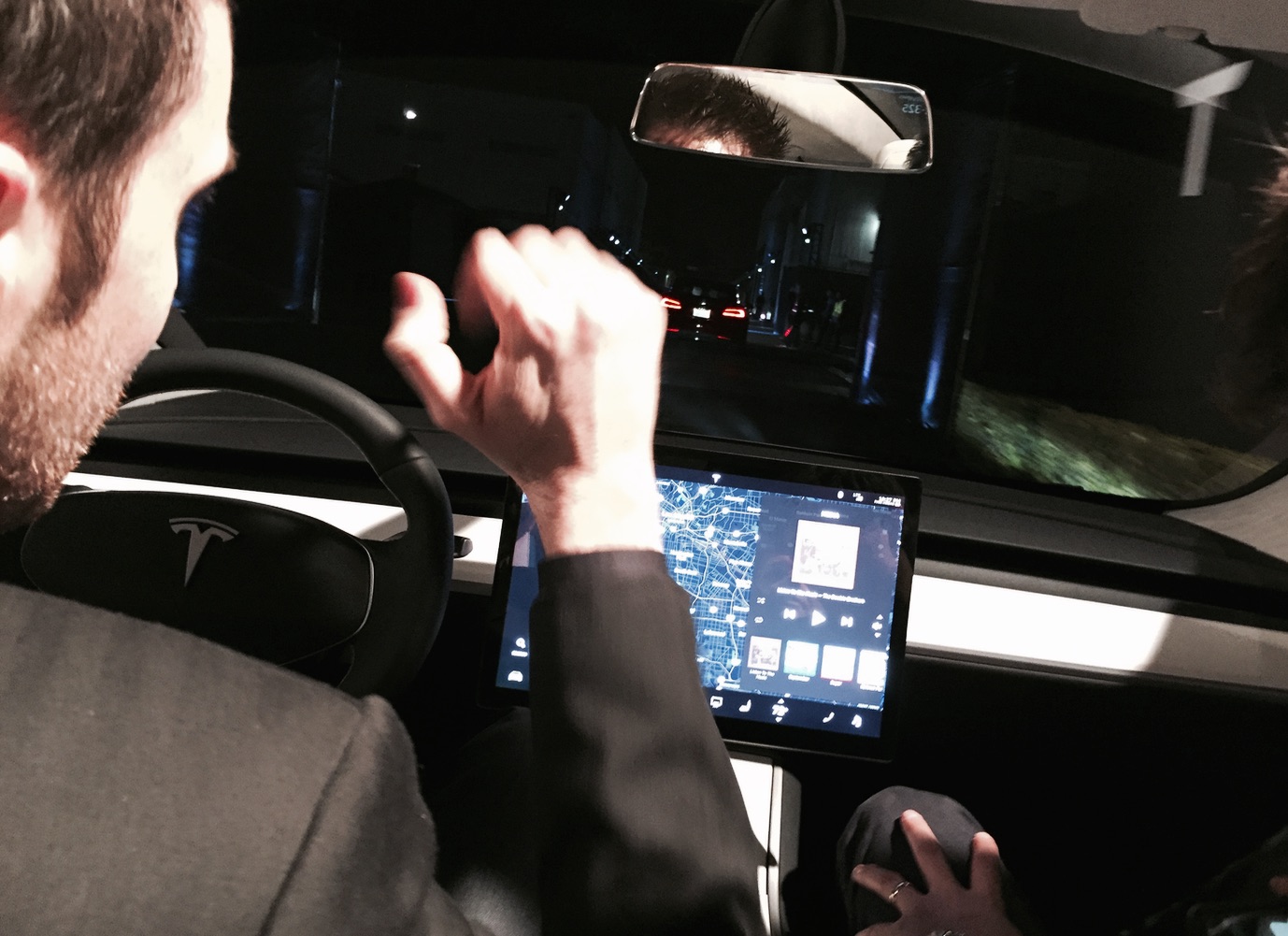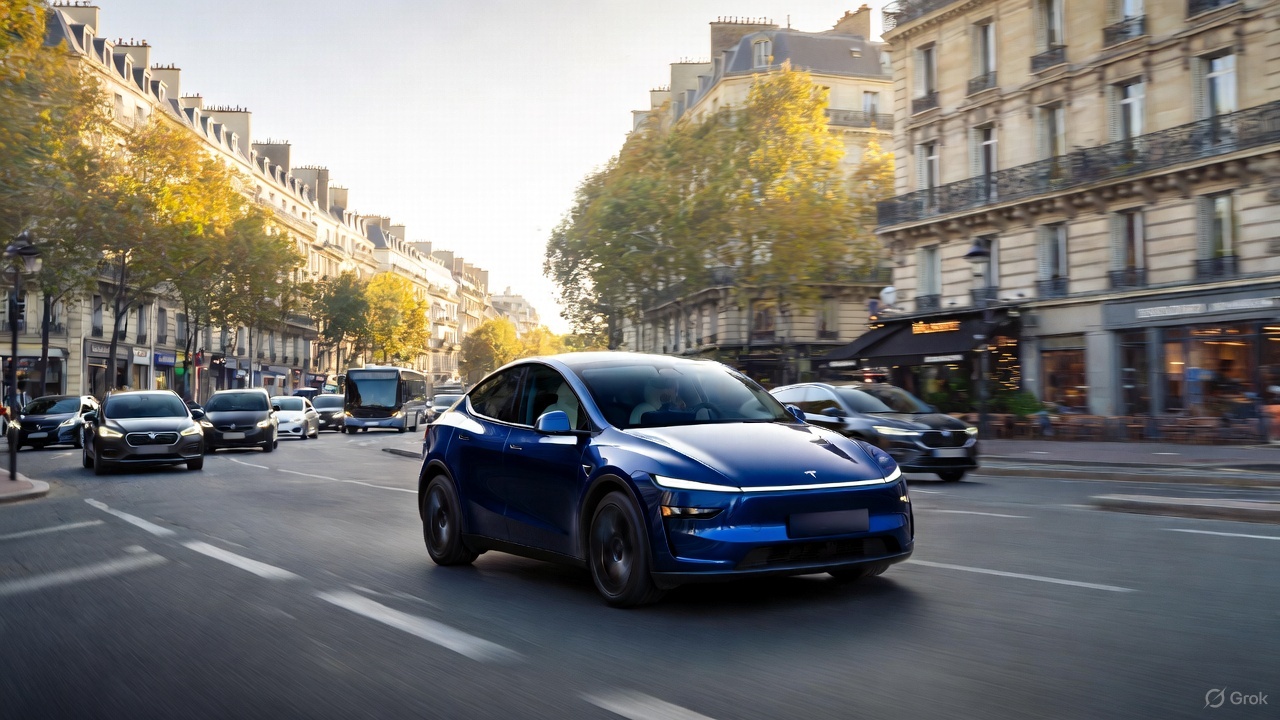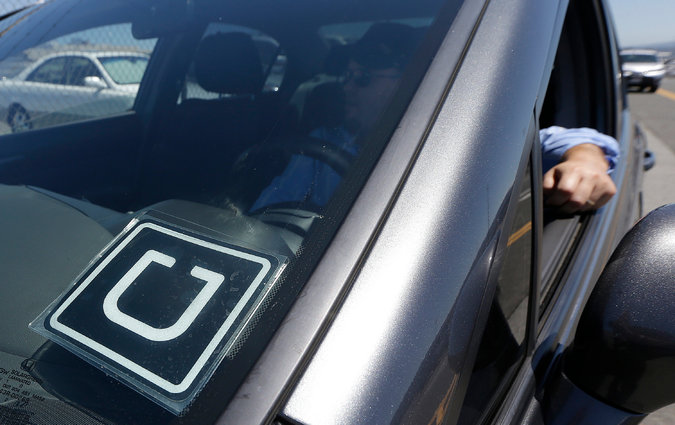News
Who will forego owning a car when Tesla’s ride-sharing service becomes available?

Picture this: no car payment, no car insurance, no circling the block looking for parking and no depreciation. Foregoing car ownership sounds pretty great. Why is it then that so many Americans insist on having a car? Simply stated: freedom.
Somewhere after the years of public transit, biking many miles or begging your parents for a ride, most of us got our own set of wheels. For some of us, it came in the form of a $900 death trap of a car that shook violently above 55 miles per hour. For others, an uncool but reliable toaster of a car. The car world as we have known it has always meant that unless you live and work in a major city with great public transportation, a personally owned vehicle is about the only convenient way to travel from point A to point B on a regular basis. This is especially true for families. If you’ve never been on a bus or subway with a baby in a stroller, spare yourself the circus. It’s also true depending on exactly which neighborhood you live in, even if you are in a major city. Taxicabs, where available, are far more convenient than public transportation, but certainly aren’t widely available outside of the most densely populated metro areas and at least to me, have always been cost prohibitive to use for any more than a special occasion. To reiterate the point, we all like freedom. And convenience. We like to go where we want to when we want to, without standing on a bus or watching a train timetable.
Ride-sharing services such as Lyft and Uber have upended the traditional taxicab model and, in many markets, undercut the price while providing a superior service. I certainly enjoyed riding in a flawlessly clean Kia Optima Hybrid Saturday night with a chatty and friendly driver far more than the high mileage, stale smelling, yellow Crown Vics that pass as taxis in Philly. The before and after experience are far better as well. Smart phone apps tell you who will be picking you up, in which kind of car, and exactly how far away they are. Cabs still require being flagged down and the joke’s on you when the 5th one passes you by with the “vacant” indicator light in use but passengers in the rear. Afterwards, you get notified that your credit card was charged in some amount that you had already been prepared for. In a taxi, you either pull out cash when you see the ever-surprising sum due or watch the driver give you an attitude for using their in-car credit card machine.
Trends are already developing among young adults to move into thriving urban areas, work nearby and pass up owning their own wheels. A lot of reasons contribute but the ease of using ride-sharing services is certainly one of them. What I’d like to explore here is whether or not this trend will grow – both among young adults as well as others – as autonomous vehicles come to market and bring with them the possibility that ride-sharing services will be even more common and affordable. I offer below a few categories of people and my assessment on whether or not they may give up a car in favor of autonomous vehicle ride-sharing.
TARGET: YOUNG, SINGLE, URBAN DWELLER. ANSWER: YES.
These folks are already the group that are giving up cars today, so surely they’ll continue to do so when that option becomes cheaper and even more widely available.
TARGET: YOUNG, SINGLE, ANYWHERE ELSE DWELLER; ANSWER: PROBABLY.
These folks will share many of attributes of those who forego car ownership today. They will, on average, have student loan debt to tackle and plenty of familiarity with smart phones.
TARGET: TWO ADULT HOUSEHOLD WITH NO KIDS. ANSWER: MAYBE.
This group of folks may be willing to forego one car in the household. Depending on their age and familiarity with today’s ride-sharing offerings, they could be the perfect target to give up one car. This demographic is the one I belong to. Having jobs in opposite directions makes owning two cars the most convenient option, but outside of the work commute, the second car never moves.
TARGET: TWO PARENT FAMILY. ANSWER: PROBABLY NOT.
Children are required to ride in car seats for quite a few years these days. For that reason alone, I would imagine ride-sharing to be more trouble than it’s worth. If, like the two-adult household with no kids one car is solely used as a commuter, that one could probably be given up. But the way I understand today’s modern family to work, either parent has to be ready to spring into action with little notice if daycare gets shut down due to snow or Junior gets sick in school.
TARGET: MATURE ADULTS. ANSWER: HOPEFULLY.
This is where I’d really like to see ride-sharing take off. If you are fortunate enough to make it to old age, your eyes or reflexes may not join you in their youthful form. The mature adults I’ve been close with have all wanted to continue driving beyond the point that in their individual circumstances, was probably wise. I get it. Freedom. When you’re a feisty octogenarian with an old habit of going to the grocery store daily (a holdover for the decades when you hid your smoking habit from everyone) it must be impossible to imagine yourself sans keys. If we can invent these cars, surely we can also invent easy ways of calling one up for a customer who isn’t particularly interested in owning or operating a smart device. (A telephone dialing service, perhaps – especially helpful for those with vision problems.)
AS FOR ME?
I just got done telling my better half that due to his short commute and our never using our second car outside of the work day, we could easily ditch car number two and have him Uber to work. The conversation was short-lived, as I have the longer commute and he has no interest in handing over the Model S fob to me on a permanent basis. In theory though, might it work? Yes. Would I end up doing it? Probably no. I’d be more inclined to owning an autonomous Tesla and letting it work for me such that the overall cost of owning and operating it was comparable to using a ride-sharing service in place of owning one.
The why is simple: freedom.

News
Man credits Grok AI with saving his life after ER missed near-ruptured appendix
The AI flagged some of the man’s symptoms and urged him to return to the ER immediately and demand a CT scan.

A 49-year-old man has stated that xAI’s Grok ended up saving his life when the large language model identified a near-ruptured appendix that his first ER visit dismissed as acid reflux.
After being sent home from the ER, the man asked Grok to analyze his symptoms. The AI flagged some of the man’s symptoms and urged him to return immediately and demand a CT scan. The scan confirmed that something far worse than acid reflux was indeed going on.
Grok spotted what a doctor missed
In a post on Reddit, u/Tykjen noted that for 24 hours straight, he had a constant “razor-blade-level” abdominal pain that forced him into a fetal position. He had no fever or visible signs. He went to the ER, where a doctor pressed his soft belly, prescribed acid blockers, and sent him home.
The acid blockers didn’t work, and the man’s pain remained intense. He then decided to open a year-long chat he had with Grok and listed every detail that he was experiencing. The AI responded quickly. “Grok immediately flagged perforated ulcer or atypical appendicitis, told me the exact red-flag pattern I was describing, and basically said “go back right now and ask for a CT,” the man wrote in his post.
He copied Grok’s reasoning, returned to the ER, and insisted on the scan. The CT scan ultimately showed an inflamed appendix on the verge of rupture. Six hours later, the appendix was out. The man said the pain has completely vanished, and he woke up laughing under anesthesia. He was discharged the next day.
How a late-night conversation with Grok got me to demand the CT scan that saved my life from a ruptured appendix (December 2025)
byu/Tykjen ingrok
AI doctors could very well be welcomed
In the replies to his Reddit post, u/Tykjen further explained that he specifically avoided telling doctors that Grok, an AI, suggested he get a CT scan. “I did not tell them on the second visit that Grok recommended the CT scan. I had to lie. I told them my sister who’s a nurse told me to ask for the scan,” the man wrote.
One commenter noted that the use of AI in medicine will likely be welcomed, stating that “If AI could take doctors’ jobs one day, I will be happy. Doctors just don’t care anymore. It’s all a paycheck.” The Redditor replied with, “Sadly yes. That is what it felt like after the first visit. And the following night could have been my last.”
Elon Musk has been very optimistic about the potential of robots like Tesla Optimus in the medical field. Provided that they are able to achieve human-level articulation in their hands, and Tesla is able to bring down their cost through mass manufacturing, the era of AI-powered medical care could very well be closer than expected.
News
Tesla expands Model 3 lineup in Europe with most affordable variant yet
The Model 3 Standard still delivers more than 300 miles of range, potentially making it an attractive option for budget-conscious buyers.

Tesla has introduced a lower-priced Model 3 variant in Europe, expanding the lineup just two months after the vehicle’s U.S. debut. The Model 3 Standard still delivers more than 300 miles (480 km) of range, potentially making it an attractive option for budget-conscious buyers.
Tesla’s pricing strategy
The Model 3 Standard arrives as Tesla contends with declining registrations in several countries across Europe, where sales have not fully offset shifting consumer preferences. Many buyers have turned to options such as Volkswagen’s ID.3 and BYD’s Atto 3, both of which have benefited from aggressive pricing.
By removing select premium finishes and features, Tesla positioned the new Model 3 Standard as an “ultra-low cost of ownership” option of its all-electric sedan. Pricing comes in at €37,970 in Germany, NOK 330,056 in Norway, and SEK 449,990 in Sweden, depending on market. This places the Model 3 Standard well below the “premium” Model 3 trim, which starts at €45,970 in Germany.
Deliveries for the Standard model are expected to begin in the first quarter of 2026, giving Tesla an entry-level foothold in a segment that’s increasingly defined by sub-€40,000 offerings.
Tesla’s affordable vehicle push
The low-cost Model 3 follows October’s launch of a similarly positioned Model Y variant, signaling a broader shift in Tesla’s product strategy. While CEO Elon Musk has moved the company toward AI-driven initiatives such as robotaxis and humanoid robots, lower-priced vehicles remain necessary to support the company’s revenue in the near term.
Reports have indicated that Tesla previously abandoned plans for an all-new $25,000 EV, with the company opting to create cheaper versions of existing platforms instead. Analysts have flagged possible cannibalization of higher-margin models, but the move aims to counter an influx of aggressively priced entrants from China and Europe, many of which sell below $30,000. With the new Model 3 Standard, Tesla is reinforcing its volume strategy in Europe’s increasingly competitive EV landscape.
News
Tesla FSD (Supervised) stuns Germany’s biggest car magazine
FSD Supervised recognized construction zones, braked early for pedestrians, and yielded politely on narrow streets.

Tesla’s upcoming FSD Supervised system, set for a European debut pending regulatory approval, is showing notably refined behavior in real-world testing, including construction zones, pedestrian detection, and lane changes, as per a recent demonstration ride in Berlin.
While the system still required driver oversight, its smooth braking, steering, and decision-making illustrated how far Tesla’s driver-assistance technology has advanced ahead of a potential 2026 rollout.
FSD’s maturity in dense city driving
During the Berlin test ride with Auto Bild, Germany’s largest automotive publication, a Tesla Model 3 running FSD handled complex traffic with minimal intervention, autonomously managing braking, acceleration, steering, and overtaking up to 140 km/h. It recognized construction zones, braked early for pedestrians, and yielded politely on narrow streets.
Only one manual override was required when the system misread a converted one-way route, an example, Tesla stated, of the continuous learning baked into its vision-based architecture.
Robin Hornig of Auto Bild summed up his experience with FSD Supervised with a glowing review of the system. As per the reporter, FSD Supervised already exceeds humans with its all-around vision. “Tesla FSD Supervised sees more than I do. It doesn’t get distracted and never gets tired. I like to think I’m a good driver, but I can’t match this system’s all-around vision. It’s at its best when both work together: my experience and the Tesla’s constant attention,” the journalist wrote.
Tesla FSD in Europe
FSD Supervised is still a driver-assistance system rather than autonomous driving. Still, Auto Bild noted that Tesla’s 360-degree camera suite, constant monitoring, and high computing power mark a sizable leap from earlier iterations. Already active in the U.S., China, and several other regions, the system is currently navigating Europe’s approval pipeline. Tesla has applied for an exemption in the Netherlands, aiming to launch the feature through a free software update as early as February 2026.
What Tesla demonstrated in Berlin mirrors capabilities already common in China and the U.S., where rival automakers have rolled out hands-free or city-navigation systems. Europe, however, remains behind due to a stricter certification environment, though Tesla is currently hard at work pushing for FSD Supervised’s approval in several countries in the region.









